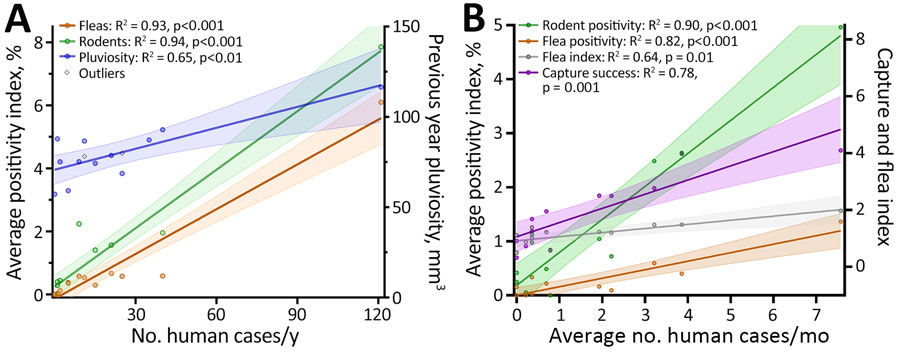Volume 30, Number 9—September 2024
Research
Ecologic, Geoclimatic, and Genomic Factors Modulating Plague Epidemics in Primary Natural Focus, Brazil
Figure 4

Figure 4. Linear regression of human cases, rodent and flea positivity, and pluviosity (rainfall amount) in a study of ecologic, geoclimatic, and genomic factors modulating plague epidemics in primary natural focus, Brazil. Annual (A) and monthly (B) average number of human cases compared with Yersinia pestis positivity among rodents and fleas and average pluviosity are shown. The previous year pluviosity data only included years from the plague outbreaks, 1966–1976. Solid lines indicate averages, shaded areas indicate 95% CIs, and dots indicate outliers.
Page created: July 11, 2024
Page updated: August 22, 2024
Page reviewed: August 22, 2024
The conclusions, findings, and opinions expressed by authors contributing to this journal do not necessarily reflect the official position of the U.S. Department of Health and Human Services, the Public Health Service, the Centers for Disease Control and Prevention, or the authors' affiliated institutions. Use of trade names is for identification only and does not imply endorsement by any of the groups named above.